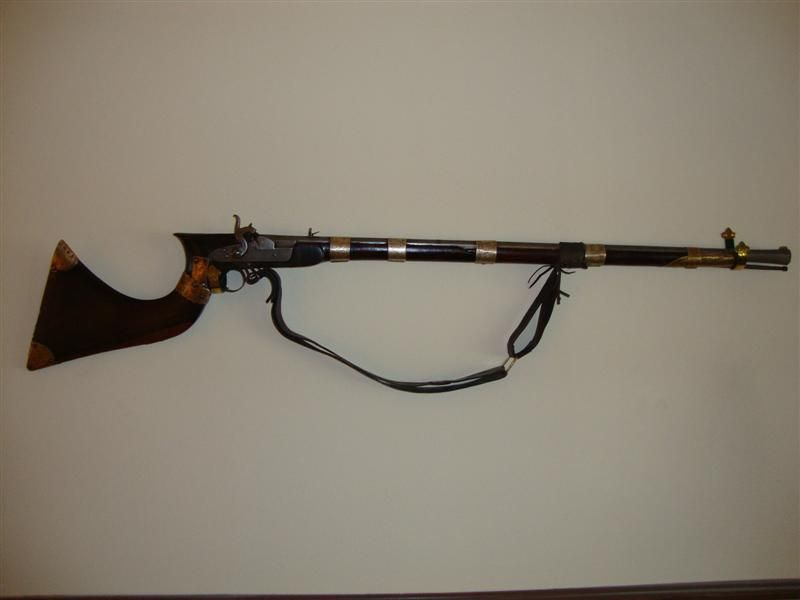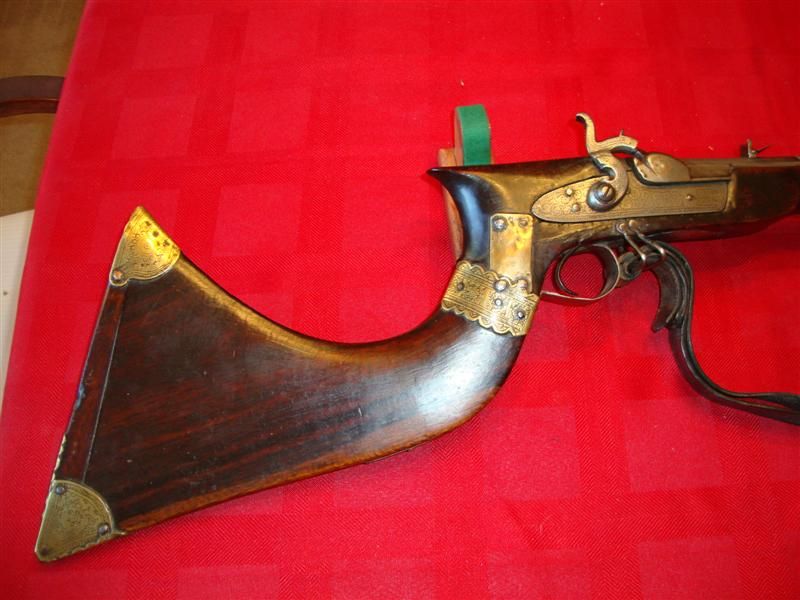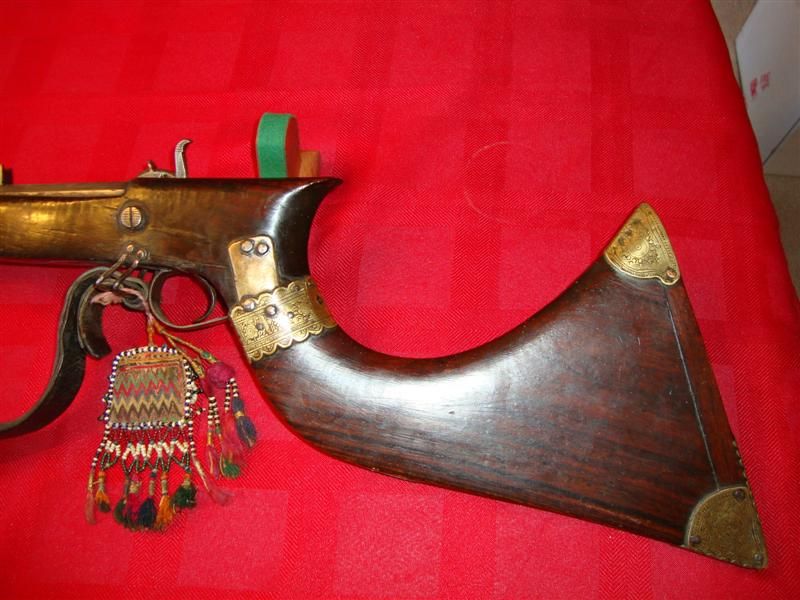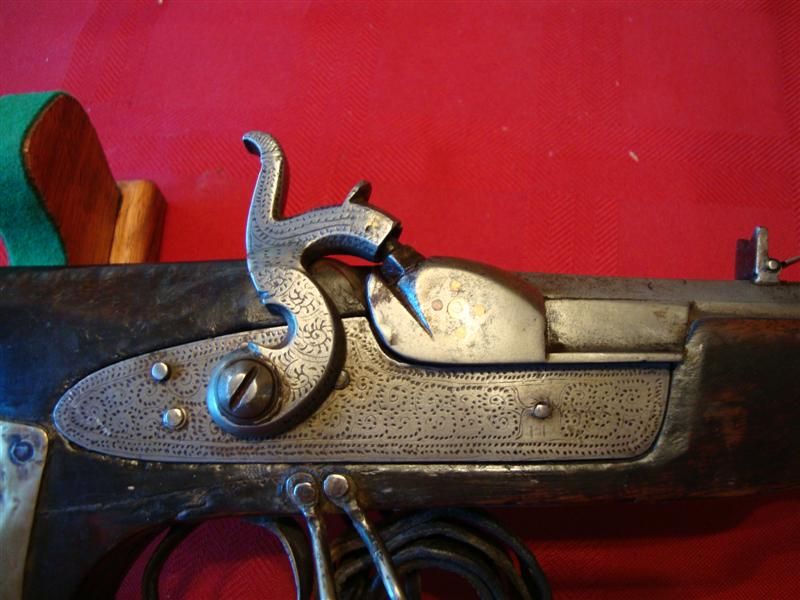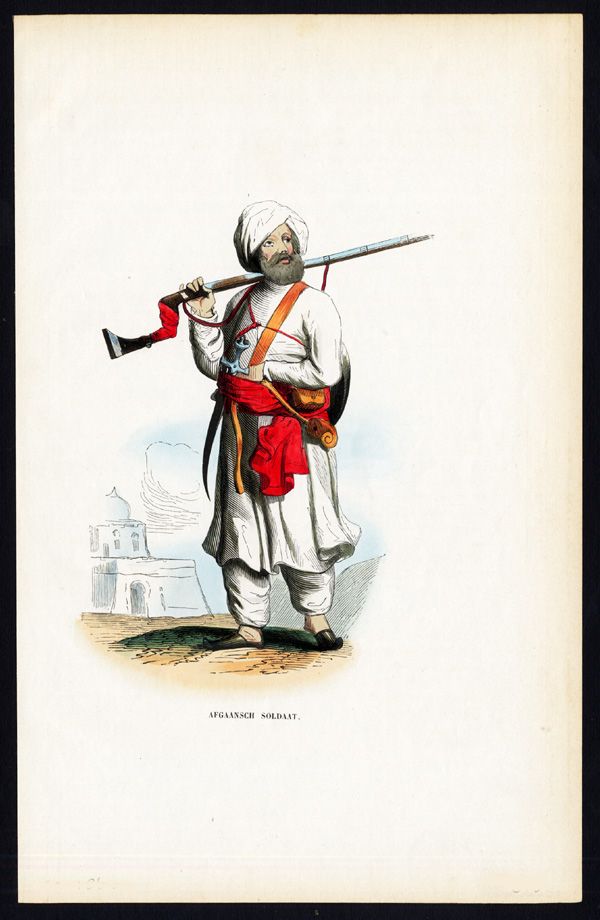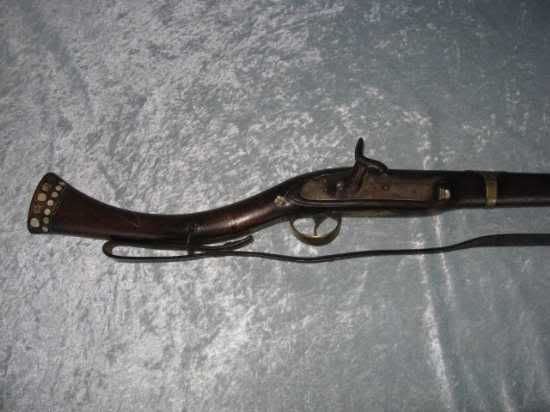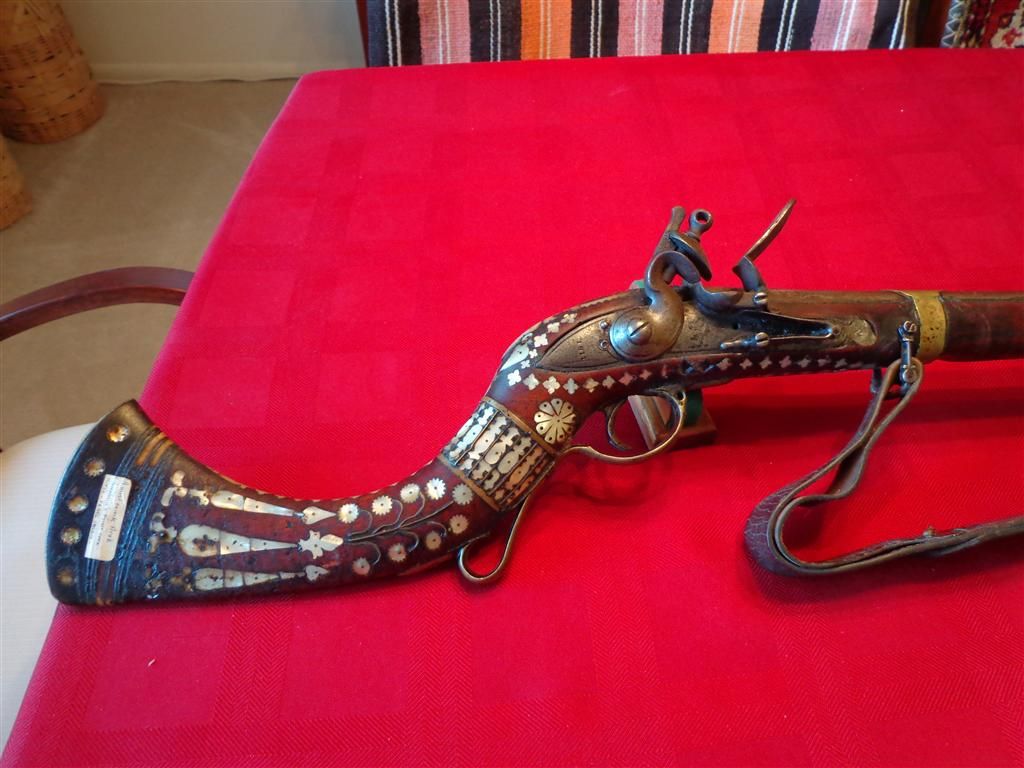MrSaladMonday
Pilgrim
- Joined
- Aug 2, 2014
- Messages
- 3
- Reaction score
- 0
I have come into a piece from a local antique store that was listed as a '19th Century Indo-Persian Rifle'. Neither the store nor the sellers had knowledge beyond that, so I've been attempting to do some research into its exact origins, but this has proven difficult. Primarily, because its flared butt design doesn't match the conventional rigid stock seen in Indo-Persia in the 19th Century and I have found only one other weapon with the same appearance.
A further consideration is that the weapon appears to be smoothbore, yet possesses a percussion firing mechanism and I'm unable to tell due to aging if the mechanism is part of its original design, or a later upgrade. What I can confirm at least is that the iconography still visible etched on its metalwork matches Islamic Arabesque art of the period which does hint at Turkish origin.
Does anyone know of the origin of this piece, or perhaps knows of any sources that might be able to shed some light? I've been looking into this for a while now with no luck so far.
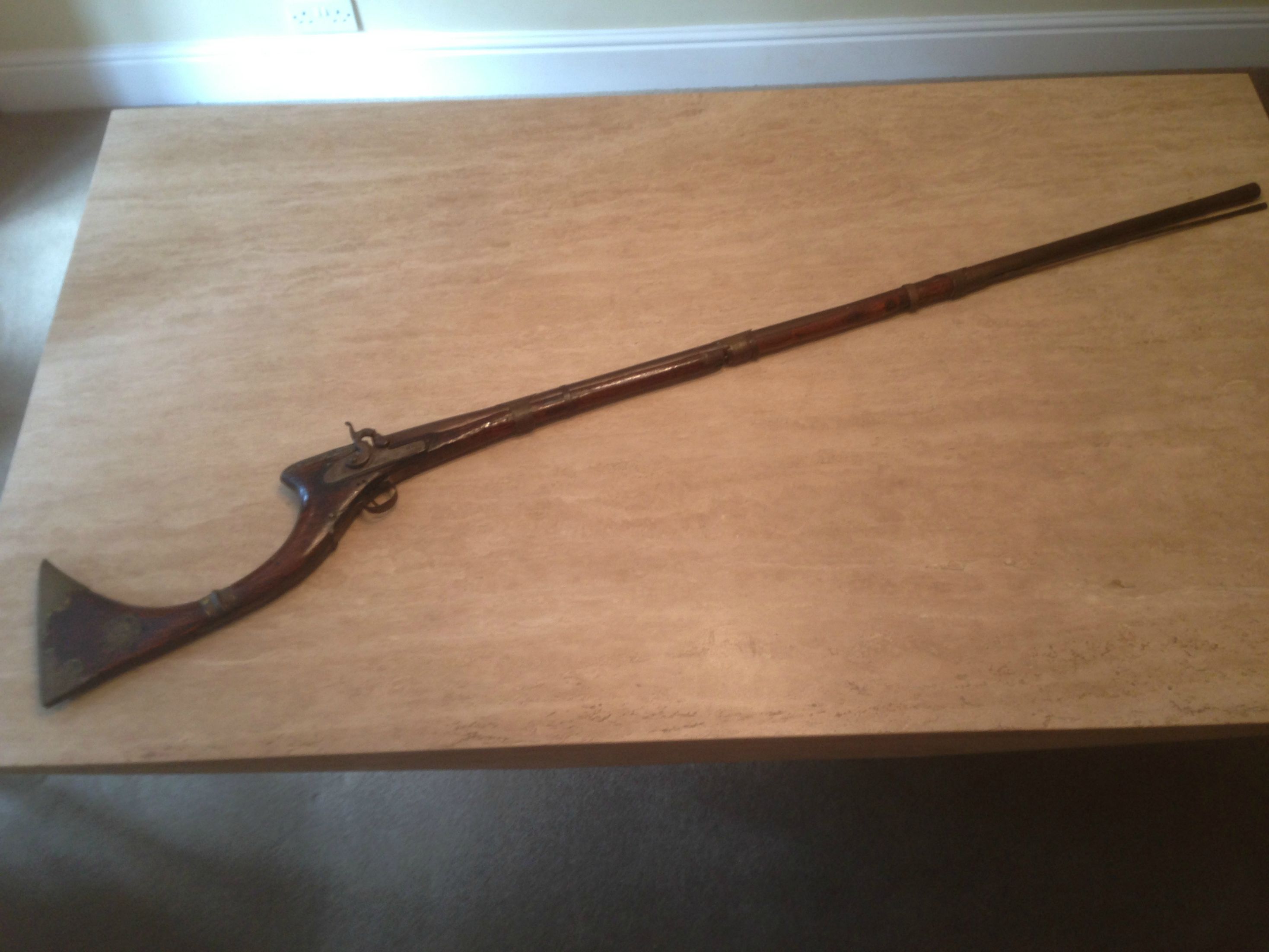
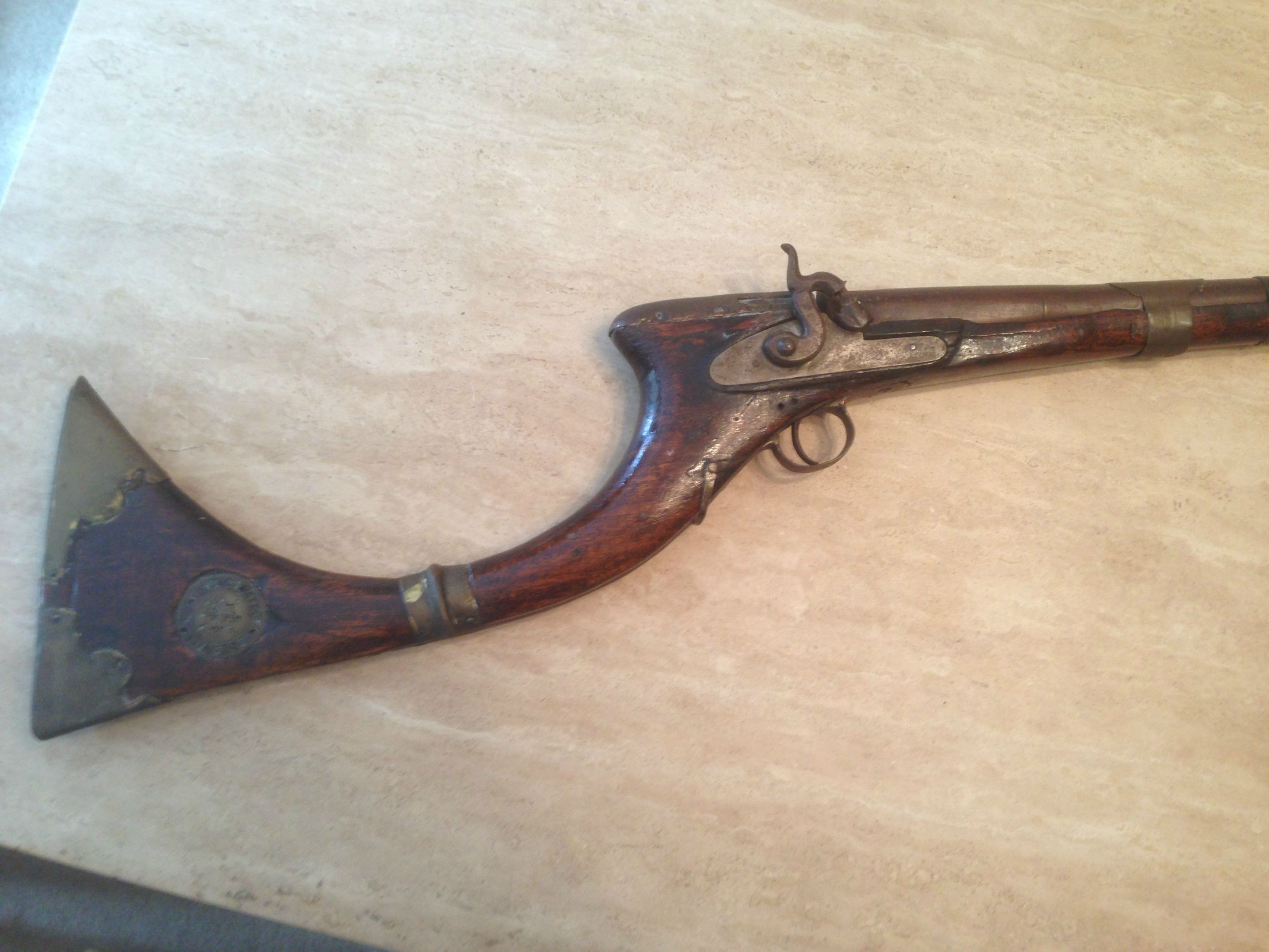
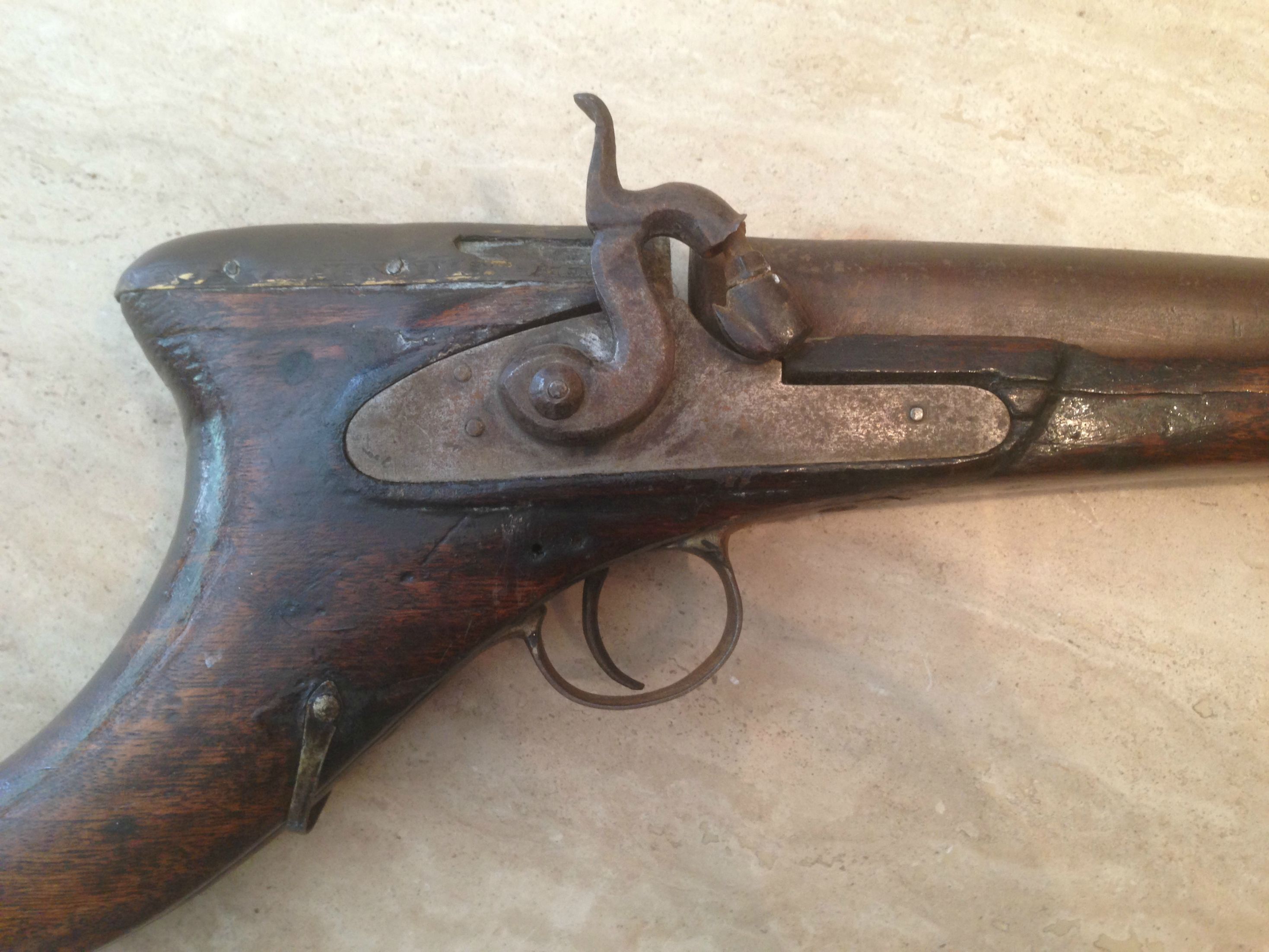
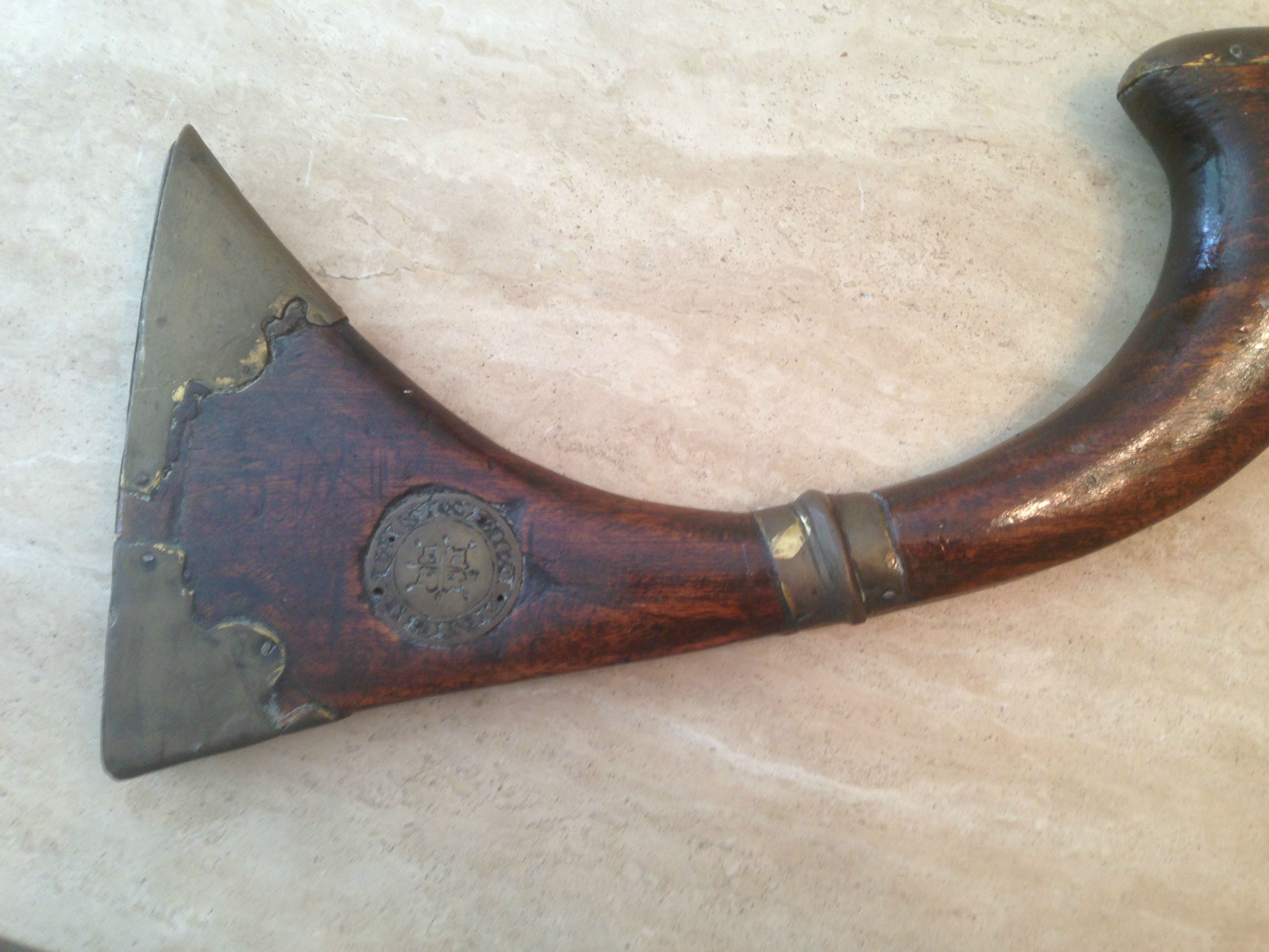
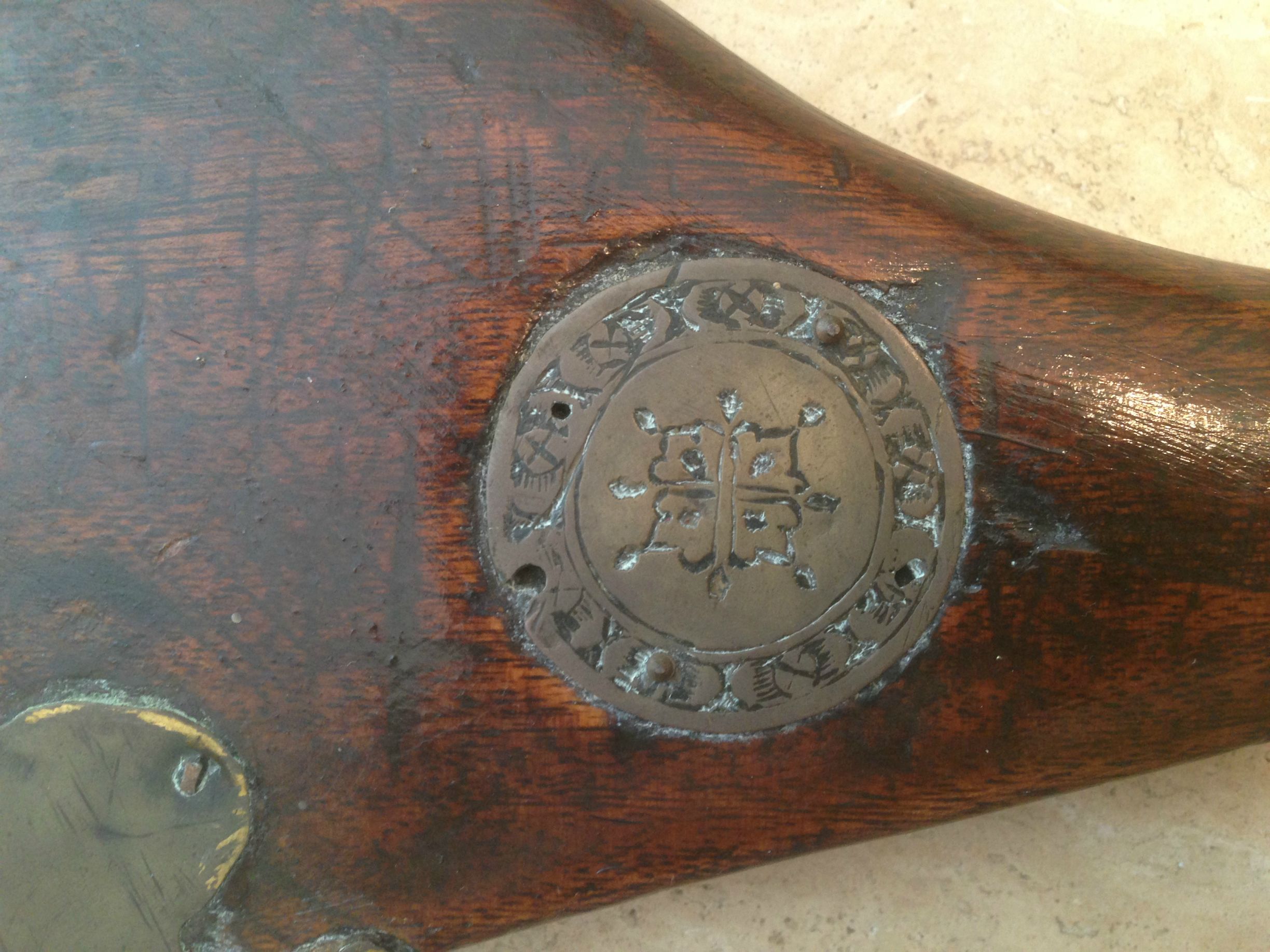
Any help at all would be greatly appreciated.
A further consideration is that the weapon appears to be smoothbore, yet possesses a percussion firing mechanism and I'm unable to tell due to aging if the mechanism is part of its original design, or a later upgrade. What I can confirm at least is that the iconography still visible etched on its metalwork matches Islamic Arabesque art of the period which does hint at Turkish origin.
Does anyone know of the origin of this piece, or perhaps knows of any sources that might be able to shed some light? I've been looking into this for a while now with no luck so far.





Any help at all would be greatly appreciated.






